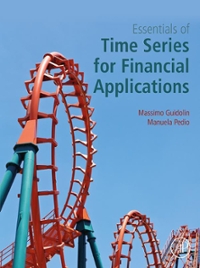Supply Chain Analysis and Design
Dynamic Lot Sizing The dynamic lotsize model in inventmy theory, is a generalisation of the Economic Order Quantity {EDQ} model that take: into account that denland for a product varies over time. Dynamic lot sizing sometimes refers to as 'TimeVaryiug Demand\" as 1IIIII'ell. In contrast to EDQ model where demand is constant, in the timevarying deterministic demand model, demands of various pelirxls are unlike. The variations depend on different reasons. For ermmple, production on a contract, which require-r that certain quantities are delivered on specied dates. Note that we are still mnsideling deterministic demand, i.e., all variations are known in advance. In the basic models, leadtime is disregarded. When dealing with lot sizing Iior timevarying demand, it is generally assumed that there are a nite number of discrete time steps, or periods. A period may he, for example, a day or a week. We know the demand in each period, and for simplicity, it is assumed that the period demand takes place at the beginning of the period. There is no initial stock. 1When delivering a hatch, the whole hatch is delivered at the same time. The holding cost and the ordering cost are constant over time. No backerders are allowed. We shall use the following notation: 1|Il'ar Denition T = number of periods, d- = demand in period i, :i = 1., 1..., T, 00 = ordering cost, HG = holding err-3t per unit and time unit. Problem Crnstco has received the following demands for a product this year: Monthlxi'FBil'l 11 12 Demandaurmammeaamemcmemmnsummsm Suppose ordering cost [0C] is $504 and holding cost [HIE] of one unit of product in a year is $3. There is no shortage cost. Backordering is not allowed in this model. To achieve the minimum total cost {ordering cost + holding cmt},h1mr many timrs the company should place orders in a year? In each order, how many products should be ordered-.7r 1What is the total cost in a year? Q2 (5 marks) Use mixed integer linear programming to solve the problem regarding the monthly demand. Suppose that holding cost is applied to the ending inventory. . Develop the mathematical model in the Word document. . Solve the problem in Excel . Develop a plan in the Word document and explain when and how many products should be ordered in order to minimise the total cost. . Recalculate the optimal value of objective function (total cost with the new assumption that the holding cost is applied to the average inventory (not ending inventory)








